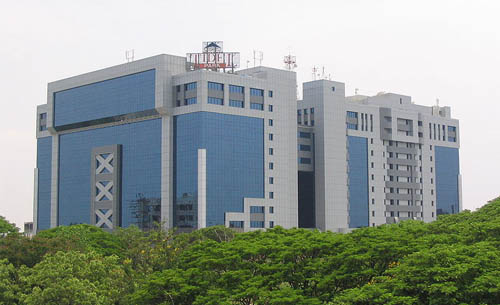
Minister admits government missed real estate growth opportunities
Urban Development Minister Kamal Nath admitted today that “the government has not responded to the tremendous growth in the real estate sector in the last one decade appropriately”.

Urban Development Minister Kamal Nath admitted today that “the government has not responded to the tremendous growth in the real estate sector in the last one decade appropriately”.

The government is keen to clean realty deals and wants to crack down on money laundering. It wants a closer look at the real estate market, widely perceived to be the biggest sink of black money in India.

We are happy with the governments focus on affordable housing. Loan amount that qualifies under priority sector lending. Now, a home loan of Rs. 25 lakh would qualify as priority sector lending.

The Associated Chambers of Commerce and Industry of India (ASSOCHAM) has suggested the government to introduce Real Estate Investment Trust and Real Estate Mutual Fund to enable investors to own a diversified portfolio of professionally managed assets in the real estate sector. In a note submitted to the government, the Chamber said that the Indian Real estate sector currently lacks any monetization vehicle for capital intensive verticals such as commercial offices and retail malls.

As the education sector evolves, factors such as technology permeation, revamped building designs, and focus on health & safety are likely to define education real estate. Besides, modern educational building design must prioritise flexibility so that spaces can be reconfigured to adapt to various teaching methods and activities, developing a dynamic learning environment. To address this and move away from traditional classroom setups, educational buildings now include collaborative spaces to encourage teamwork and group learning. Moreover, sustainable, and eco-friendly design elements, such as energy-efficient systems and natural lighting, are becoming increasingly common to reduce the environmental impact of educational buildings.

During the first nine months of 2024, large deals (>200,000 sq ft) accounted for about 40% of the overall demand. Although a vast majority of these larger deals came from 3PL players, Engineering and FMCG segments also saw considerable large-sized deals. At the city level, industrial and warehousing space uptake in Delhi NCR was also driven by large sized deals, a marked deviation from 2023, wherein leasing activity was dominated by small sized deals. Almost 50% of the deals in the first nine months of 2024 were large sized in Delhi NCR.

The real estate market of Goa is also expanding not only in terms of buyer interest but also geographically. The once-limited property market is now spreading across new areas, offering a wider variety of options to buyers. Alongside this expansion, there has been a notable rise in property prices. What was once a market catering to properties valued between Rs 5 crore and Rs 15 crore has evolved, with some villas now fetching prices of up to Rs 100 crore. This surge reflects the growing interest from ultra-high-net-worth individuals who are seeking exclusive, luxury homes in the region.

In a report titled, ‘Fortifying India’s I&L landscape with a new manufacturing growth formula’, property consultant CBRE claims that the manufacturing sector’s growth has significantly contributed to warehousing demand. The share of sectors catering to the manufacturing space, including engineering & manufacturing, electronics & electricals and auto & ancillary sectors, within the total warehousing demand across major cities, has increased substantially, growing from 15% in 2019 to 24% in 2023 and 25% in H1 2024. The total leasing for warehousing from these manufacturing-related sectors stood at 4.1 mn. sq. ft. in H1 2024.

This long-term growth in real estate is underpinned by six salient growth levers which includes, rapid urbanization, infrastructure development, digitalization, demographic shifts, sustainability and investment diversification; all of which will form the bedrock for a quantum leap in Indian real estate by 2047. These long-term growth ingredients will be pivotal in the expansion of Indian real estate – from under a trillion currently, to potentially a USD 10 trillion market by 2047, accounting for a 14-20% share in the country’s GDP.

This strategic growth is expected to be driven by a focus on innovation as these companies seek to enhance their technological capabilities and market presence. Moreover, emerging technologies are projected to generate approximately 4.7 million tech jobs over the next five years across diverse sectors, including manufacturing, retail, education, finance, and insurance. This surge in job creation underscores the growing importance of technology across industries and highlights the need for a skilled workforce to meet the evolving demands of the digital economy.
